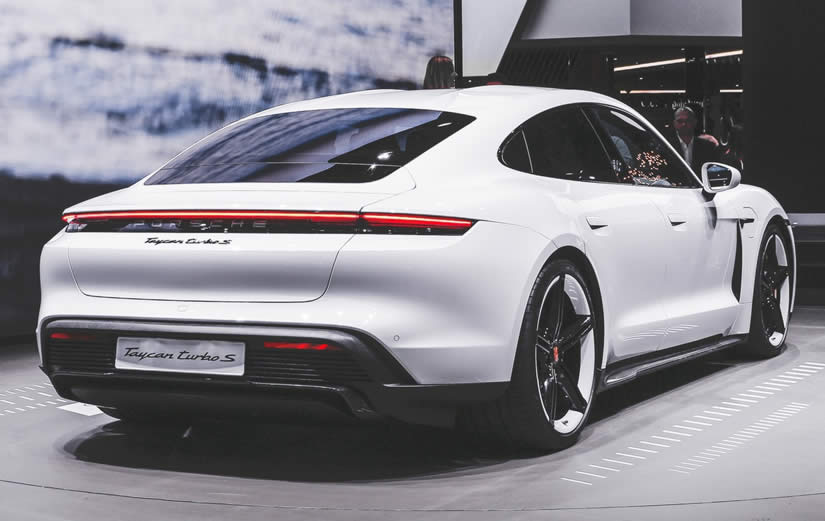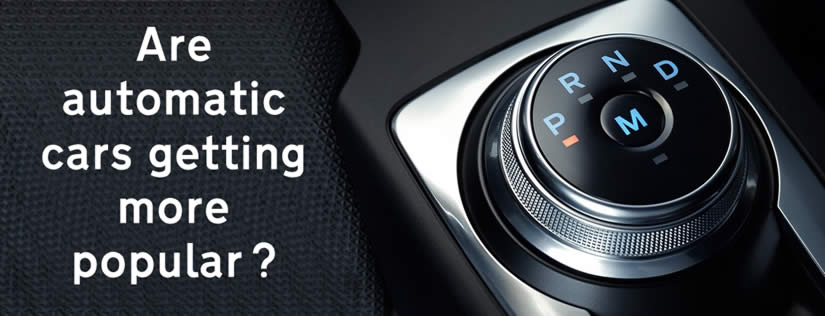The automatic gearbox was invented a little over 100 years ago, but for the most part, UK drivers have shunned the automatic car in favour of the tried and tested manual. That is, until recently.
Are Automatic Cars Getting More Popular?
According to the Society of Motor Manufacturers and Traders, 2020 was the first year in which sales of new automatic cars exceeded those with a manual transmission.
Automatic cars certainly are getting more popular. Within the first 9 months of 2020, 54 percent of all new-car sales within the UK were automatics.
It’s also clear that the popularity of the automatic car is a recent trend as only 10 years prior, the sales of automatic cars would only represent 20 percent of all new-car sales within the UK.
Why Are Automatic Cars Getting More Popular?
Drivers are increasingly choosing the automatic transmission over the manual version. Let’s take a look at why.
Improved Technology
Automatic cars of old would have 3 forward gears and would generally be considered slow, awkward to control, jerky and uneconomical. This stigma stuck for many years and it was only at the turn of the millennium that the automatic gearbox had significant improvements.
Now, even the most basic of automatics have 5 forwards gears and depending on the make and model of your car, 9 forward gears being common place. With improved, modern technology, it means automatic cars offer a smoother drive with a more responsive level of control.
Better Fuel Economy
When learning to drive in a manual car, we are mainly taught how to get from point A, to point B safely with little emphasis on how to do so in a way that maximises fuel efficiency. As such, many of us do not drive cars with manual transmissions as efficiently as we could.
The automatic gearbox is sill heavier than the manual, more weight means more fuel, but with a greater number of gears and modern computer engine management systems, the automatic transmission shifts gears at the optimal point. This means that gear changes occur at a point where there’s sufficient engine power for the task at hand, but with fuel efficiently being a close priority.
This often makes the automatic transmission better at fuel efficiency in city-driving environments (stop-start driving) than the manual equivalent.
Exhaust Emissions
With increasing regulations to reduce pollution and CO2 emissions, we’re now seeing more hybrids on the roads. Although some mild hybrid cars may come with a manual gearbox, most full hybrids are suited to an automatic transmission.

With evermore clean air zones in UK cities and increasing vehicle tax rates for ‘dirty’ vehicles, more drivers are opting for lower emission hybrids. Being as most hybrids are automatic, it’s yet another nail in the manual transmission’s coffin.
Ease of Use
Let’s face it, if you live in a city, driving an automatic is a lot less hassle than a manual. If constantly pressing the clutch in and out and changing gear is your thing, then fine.
Performance and Fun
With automatics of old, the last thing you would ever think of is ‘performance’ or ‘fun’. Perhaps the ‘fun’ part is subjective, but in terms of performance, even the fastest of manual gear changing will never come close to the speed in which an automatic dual-clutch gearbox can change gear.
As the name suggests, a dual-clutch gearbox has two clutches. Just like a traditional clutch, the first clutch has the engine connected to the wheels, while the second clutch already has the next gear prepared and ready to connect. Most mid, to high-end preference cars have a dual-clutch gearbox.
Electric Cars
Most electric cars do not have a gearbox. This is because an electric motor is capable of delivering power (torque) over a broad range of RPM, whereas the internal combustion engine has a narrow range of power. If a petrol of diesel car only had one fixed gear for moving off, you’d reach maximum power at around 15 mph or so and that would be it. But an electric car keeps maximum torque for a lot longer, meaning that is can reach much higher speeds until the peak torque begins to drop.
Additionally, unlike a petrol or diesel car, an electric car motor doesn’t need to idle and therefore doesn’t require a clutch to disconnect the engine from the drive wheels to prevent stalling.
However, a few high-performance electric cars do have a two-speed gearbox. Being as it’s a performance car, the benefit of this is to increase top speed. Alternatively, the use of an additional gear can also be used to reduce the energy used at high speeds, therefore increasing the vehicle’s range.

As electric car technology progresses and the cost of battery packs fall, we might see more electric cars with an automatic two-speed transmission.
Future of the Manual Car
With most hybrid cars being automatic and all electric cars being automatic, it’s inevitable that the popularity of the automatic transmission will increase. The popularity of the automatic will only increase as we head towards 2030 where in the UK, we will see a ban on the sale of all new petrol and diesel cars. If you want to buy a new car, you’ll have a choice of hybrid, electric or hydrogen powered – all of which are automatic.
From 2030, you’ll still be able to purchase used petrol or diesel cars, either in manual or automatic transmission, but as these used cars age, we’ll see fewer around until eventually, the manual car will be thing of the past.
Automatics and the Driving Test
An increasing number of individuals are choosing to learn and take the driving test in an automatic. Tests taken in manual transmission cars is still by far the popular choice, but with fewer reasons in having to concern yourself with clutch control and stalling, the driving test will soon be dominated by automatics.
